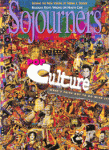For salad lovers this is a heady time of year, with early cucumbers, flawless carrots, and more varieties of lettuce and greens than a person can shake a salad fork at. Best of all, budding in the back of the mind, is the promise of tomatoes just around the corner.
Perhaps I should say this is an easy time of year
to make a salad, rather than a good time. Because with an expanded notion of what constitutes a salad, no time of year is a bad one.
For instance, not long ago a relative served a pungent, juicy grated beet and onion salad, my first inkling that beets could be eaten raw. Another shocker was a newspaper recipe for an Italian salad calling for bread as its base ingredient. (I haven’t tried it yet, but it’s a fascinating idea.)
My tired concept of a three-bean salad was revived last winter when I sampled a spicy black bean salad with corn, red pepper, parsley, and walnuts. It was so good, I began looking out for recipes using grains and legumes as salad material. "Lentil and Chickpea," "Apricot Walnut Wheatberry," and "Tomato Quinoa" are some of the gleanings.
BECAUSE FREQUENT exposure has dulled people’s enthusiasm for so-called "rabbit food," the cook’s job is to add an element of surprise to the salad bowl. Try daikon radish—a long, white root—instead of the red variety. Add a fresh herb, such as basil, to the greens. Sprinkle toasted nuts on top. Use spinach instead of lettuce. Make homemade croutons.
Experiment freely with different salad dressings. I usually serve one tried-and-true dressing such as a Ranch style, along with an experimental one so I won’t offend someone not enthused about an odder flavor (odder flavor being something such as orange-sesame, honey-mustard, sherry vinaigrette, or hot bacon).
Have some basic ingredients on hand: cider vinegar or balsamic vinegar, olive oil, salad oil, fresh lemon, mayonnaise, yogurt, fresh garlic, sugar or honey, tomato sauce or ketchup, Worcestershire sauce, soy sauce, fresh ginger, salt, pepper, and a variety of dried spices. Then mix and brew. A basic French dressing—ketchup, oil, vinegar, brown sugar, salt—can be made into rich Russian dressing by using balsamic vinegar and adding a pinch of cloves and cardamom, for example. Amazingly delicious dressings can be made without any oil at all.
Mind your p’s and q’s on temperature and timing. Have the greens crisp and cold. Allow dressings to come to room temperature. Add ingredients that will get soggy (nuts and croutons) only at the last minute.
Consider building individual salads on separate plates rather than using a deep salad bowl. It will be much easier to work some artistry with the various shapes and colors. Serve a great salad, and you probably won’t need the rest of the meal at all!
Catalina-Style Dressing
- 3/4 cup oil (optional)
- 1/4 cup sugar
- 1 tsp. Worcestershire sauce
- 2 Tbls. grated onion
- 1/4 cup vinegar
- 1/3 cup ketchup or tomato sauce
Combine all ingredients. Stir until sugar is dissolved.
Homemade Croutons
At some point in every kitchen, there will be a partial loaf of bread that is a little too stale for sandwiches, but not yet moldy. This is when you should think "croutons."
Any non-sweet bread makes good croutons—whole wheat, rye, sourdough, etc. Making croutons is a job that can be shoe-horned in amid other cooking if you’re going to have the oven on or be cutting and chopping something.
Whack the bread into squares. Pile them, not too deeply, on a cookie sheet.
In a saucepan melt a generous amount of butter or margarine (an entire stick for a full pan of bread). Sprinkle in onion powder, garlic powder, oregano, basil, thyme, salt, and pepper. The amounts depend on how mild or savory you want your croutons. Drizzle butter and spices over bread cubes.
Bake in a 300 degree oven until the aroma of toast fills the kitchen. Take out pans and stir to re-coat cubes with butter and spices. Bake some more. Croutons are done when all sides of bread cubes are crisp. Cool and store in an airtight container or plastic bag.
Carey Burkett, former assistant to the editor at Sojourners, is now an organic vegetable farmer in Hallettsville, Texas.

Got something to say about what you're reading? We value your feedback!